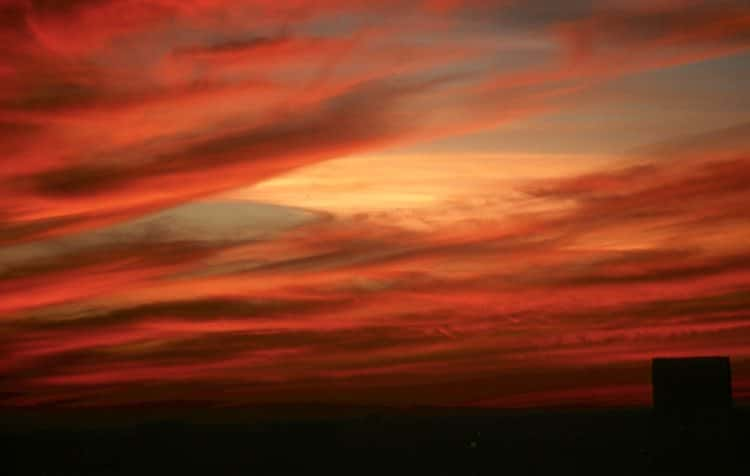Nombre total de pages vues
15/10/2024
VILLES BIONIQUES DU FUTUR - L’arche bionique de Taiwan : la nature à la verticale
LES NUAGES DIEUX DU CIEL - Qu'est-ce qu'un cirrus ?
ASTRONOMY - Animation: Comet Tsuchinshan-ATLAS Tails Prediction
2024 October 15
Credit & Copyright: Nico Lefaudeux
Explanation: How bright and strange will the tails of Comet Tsuchinshan-ATLAS become? The comet has brightened dramatically over the few weeks as it passed its closest to the Sun and, just three days ago, passed its closest to the Earth. C/2023 A3 (Tsuchinshan–ATLAS) became of the brightest comets of the past century over the past few days, but was unfortunately hard to see because it was so nearly superposed on the Sun. As the comet appears to move away from the Sun, it is becoming a remarkable sight -- but may soon begin to fade. The featured animated video shows how the comet's tails have developed, as viewed from Earth, and gives one prediction about how they might further develop. As shown in the video, heavier parts of the dust tail that trails the comet have begun to appear to point in nearly the opposite direction from lighter parts of the dust tail as well as the comet's ion tail, the blue tail that is pushed directly out from the Sun by the solar wind.
14/10/2024
INVENTIONS A L'HORIZON 2050 - Certaines plantes deviendront éternelles
ASTRONOMY - Comet Tsuchinshan-ATLAS Over the Lincoln Memorial
2024 October 14
Credit & Copyright: Brennan Gilmore
Explanation: Go outside at sunset tonight and see a comet! C/2023 A3 (Tsuchinshan–ATLAS) has become visible in the early evening sky in northern locations to the unaided eye. To see the comet, look west through a sky with a low horizon. If the sky is clear and dark enough, you will not even need binoculars -- the faint tail of the comet should be visible just above the horizon for about an hour. Pictured, Comet Tsuchinshan-ATLAS was captured two nights ago over the Lincoln Memorial monument in Washington, DC, USA. With each passing day at sunset, the comet and its changing tail should be higher and higher in the sky, although exactly how bright and how long its tails will be can only be guessed.
13/10/2024
ASTRONOMY - Aurora Timelapse Over Italian Alps
2024 October 13
Video Credit & Copyright: Cristian Bigontina
Explanation: Did you see last night's aurora? This question was relevant around much of the world a few days ago because a powerful auroral storm became visible unusually far from the Earth's poles. The cause was a giant X-class solar flare on Tuesday that launched energetic electrons and protons into the Solar System, connecting to the Earth via our planet's magnetic field. A red glow of these particles striking oxygen atoms high in Earth's atmosphere pervades the frame, while vertical streaks dance. The featured video shows a one-hour timelapse as seen from Cortina d'Ampezzo over Alps Mountain peaks in northern Italy. Stars from our Milky Way Galaxy dot the background while streaks from airplanes and satellites punctuate the foreground. The high recent activity of our Sun is likely to continue to produce picturesque auroras over Earth during the next year or so.
12/10/2024
LES NUAGES DIEUX DU CIEL - Stratocumulus au Nouveau-Mexique
ASTRONOMY - Northern Lights West Virginia
Image Credit & Copyright: Jonathan Eggleston
Explanation: A gravel country lane gently winds through this colorful rural night skyscape. Captured from Monroe County in southern West Virginia on the evening of October 10, the starry sky above is a familiar sight. Shimmering curtains of aurora borealis or northern lights definitely do not make regular appearances here, though. Surprisingly vivid auroral displays were present on that night at very low latitudes around the globe, far from their usual northern and southern high latitude realms. The extensive auroral activity was evidence of a severe geomagnetic storm triggered by the impact of a coronal mass ejection (CME), an immense magnetized cloud of energetic plasma. The CME was launched toward Earth from the active Sun following a powerful X-class solar flare.
11/10/2024
MUSIQUE - Alumni Orchestra - Jacques Offenbach - Ouverture de la Belle Hélène
SANTé/MEDECINE - CANCER - 12 AVANCEES REVOLUTIONNAIRES - 3. Des vaccins personnalisés pour chaque patient
L’idée peut sembler futuriste, mais elle est bien réelle : des vaccins personnalisés contre le cancer sont en cours de développement au Roya...

-
2022 September 26 All the Water on Planet Earth Illustration Credit: Jack Cook, Adam Nieman, Woods Hole Oceanographic Institution ; Data ...
-
2025 May 11 The Surface of Venus from Venera 14 Image Credit: Soviet Planetary Exploration Program , Venera 14 ; Processing & Copyri...





